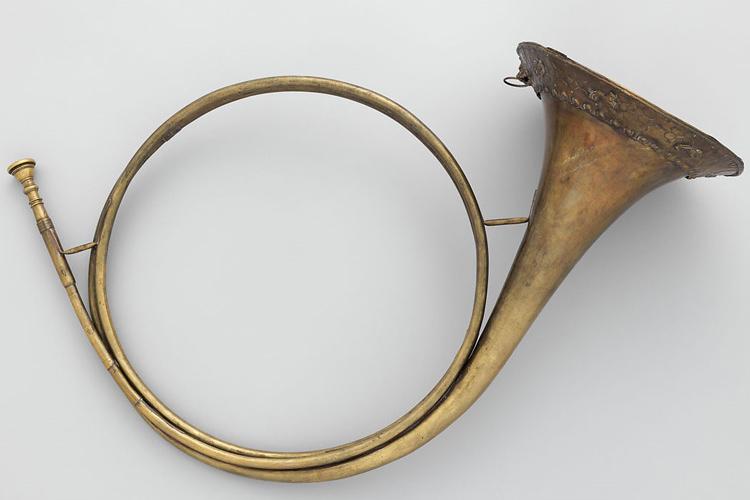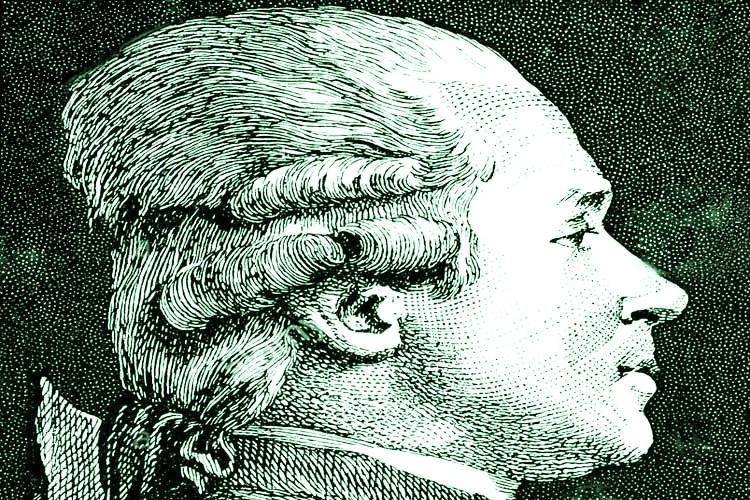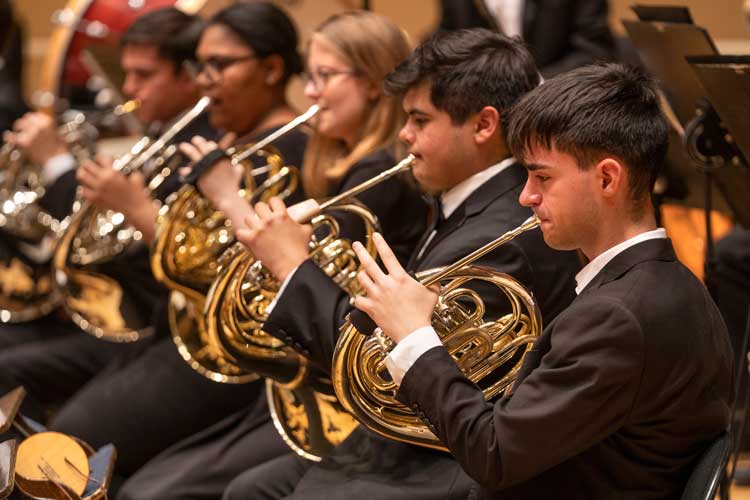The French Horn: The ''poetic voice'' of the symphony orchestra
''The horn is so much like a child, a living creature[...] I claim that is a most fascinating-almost lovable instrument'' Dennis Brain
Introduction
Known for its warm, velvety and charming sound, the french horn is one of the most beautiful and impressive musical instruments of the symphony orchestra. Starting with the word itself, it comes from the latin word ''cornu'' which means ''animal horn''. It received this name because of its shape. It is a brass aerophone instrument with a spiral shape that ends in a large open bell. More specifically, it is divided into five main parts: main body, bell, mouthpipe, mouthpiece and valve system. Composers use the french horn for its charming and incredible sound, whilst there are many well-known solos that have been written about this rare and remarkable instrument. But, what is the history behind the french horn? How, from an outdoor instrument, did it become a fundamental instrument for the art of music?
A brief history of the french horn
The truth is that we have very little documentary evidence concerning of french horn's history and evolution. According to studies, the conch shell and the animal horn are considered the ancestors of the french horn. The earliest depictions of the horn date back to the 14th century in a form of a circular ''winding'' of the tube.
Old Horn

These horns were probably suitable only for transmitting audio messages. In the middle of the 17th century the hunting horn (cor de chasse) appeared in France, which was designed to be played as the horn player was on horseback during hunting activities. This horn was used for military activities as well as in hunting scenes. The hunting horn just consisted of a single or double winding of the tube and produced up to eight notes. There is some disagreement about when and where the hunting horn appeared for the first time in the orchestra. Some researchers believe that it appeared in France, others in Italy. What is confirmed is that the first orchestral appearance of the horn was in 1639 in Francesco Cavalli's Opera ''Le Nozze di Teti e di Peleo'', in Venice. In 1664, composer Jean Baptiste Lully also used the hunting horn in his opera ''La Princesse d'Élide''. However, since 1700 the french horn evolved significantly. It underwent various modifications mainly by Vienesse musical instrument manufacturers, such as Johannes and Michael Leichnamschneider. Following many trials, the horn was improved and this evolution contributed to the creation of the orchestral horn. Despite its significant progress, the horn wasn't yet an official member of the orchestra, until 1759, when the orchestra at the Opéra national de Paris hired two horn players for Jean Philippe Rameau's opera ''Les Paladins''.
Hornist Anton Joseph Hampel

The horn evolved significantly in the 18th century by the hornist Anton Joseph Hampel, who gave the instrument the sound and structure characteristics it has today. Hampel discovered that the notes of the harmonic scale could be lowered by placing the right hand inside the bell. In this way, the horn player was able to play the chromatic scale too, as well as changes the sound, depending on the position of the hand. Until the middle of the 19th century, horns were called ''natural horns'' because of their simple structure. These horns consisted of a single coiled tube, a large bell and a mouthpiece and couldn't play musical scales. The most important evolution of this impressive instrument to its modern form was the invention of valves. In fact, it was the first musical instrument in which valves were placed (piston valves). More specifically, in 1814 the German horn player, Heinrich Stölzel designed and presented a valved horn and in 1818 along with his colleague Friedrich Blümhel he received a patent for this innovation. The application of valves gave the horn a rich and beautiful tone in all registers and also allowed the musician to be able to play the whole chromatic scale, where before he was only allowed to play the harmonic series. Furthermore, this invention allowed the horn to develop and in 1819 this two-valve system was expanded to three by Christian Friedrich Sattler. Τhe french horn had already become a permanent member of the orchestra and was used by the composers of the time. As the composers realized the possibilities of the horn, they used it more and more and they combined it with the strings and woodwind instruments thus creating a wonderful sound. Composers however, started to write for the valve horn from around 1853. A great change is observed at the end of the 19th century, when the German horn maker Fritz Kruspe made the first double horn. This horn combined two tubes of different lengths (F/Bb). The double horn somehow solved the acoustic problems that arose from the single horn. Furthermore, it adds a second higher register (Bb horn) to the original (F horn) allowing the horn player to play high passages with greater ease. Finally, in the 20th century, the triple horn was invented, which has three pipes (F/Bb/ F-alto). However, the double horn is the most common and widely used horn today.
The structure and playing characteristics of the french horn
The french horn is a brass aerophone instrument. The horn player uses the mouthpiece to produce sound. The mouthpiece is metallic, removable and has the shape of a small funnel. The main body of the horn is a thin conical tube wound in a spiral ending in an open bell. The bell amplifies and disperses the sound to all listeners. If we could unroll the pipe, it would reach around 4 meters. Its range is about 4 octaves. The horn player uses his left hand to operate the three valves that change the pitch of notes during play and he places his right hand lightly into the bell to adjust the sound and tone of the instrument. But, if he pushes his hand deeper into the bell it affects the tone, which becomes more penetrating and if he pushes his hand even deeper and blows very loudly, he produces a hoarse sound, known as ''cuivre''. It is difficult to become an excellent performer on the french horn and requires great dedication due to its technique. For this reason, it is considered one of the most sensitive and technically difficult wind instruments.
Horn Orchestra

The gentle sound of the french horn and its great representatives
The french horn is the ''bridge'' between woodwind and brasswind instruments, due to its warm and velvet sound. Its ability to mediate between strings and winds makes this instrument so necessary for the orchestra and music generally. This instrument has a soft sound in the low range and a bright sound in the high range. Because of its sweet and charming sound, composers use it a lot in the orchestra and whilst in the past it only had an accompanying role, composers have assigned several solo parts to highlight its wonderful sound. I would like to mention some of the best horn players who have enchanted us with their interpretations, starting with the older hornists such as Dennis Brain, Philip Farkas and Vincent DeRosa and continuing with the younger ones such as Herman Baumann, Radek Baborak, Stefan Dohr and Sarah Willis. I will dwell more on Sarah Willis because she is the first female horn player of the Berlin Philarmonic. Moreover, through her love for the horn and her wonderful projects, she has made this instrument widely known. Last but not least I would like to refer to a great teacher and one of the most important representatives of this wonderful instrument in Greece, Evangelos Skouras. Evangelos has made significant studies in the french horn and was a collaborator of the great composer Manos Hadjidakis for 20 years.
Conclusion
The history of the french horn takes us back in time. It started with a very simple form probably as an instrument for military activities and evolved significantly to become a necessary instrument in the orchestra and charm us with its velvety sound. The horn has a very sweet sound and is the connecting link between brass and woodwind instruments. It is a heroic and courageous instrument but at the same time is melancholy and very kind. I would like to conclude this article with a phrase by Evangelos Skouras ''Where in the storm begins the silence, the rainbow appears. Where in the orchestra begins the majesty, the horn appears''.
Our website respects the intellectual property rights of creators, as well as the music rights of authors and composers.
The musical works are provided solely for the private use of each visitor/user
and any further exploitation of them in any way is prohibited without prior permission from AUTODIA and EDEM Rights.
Radio Art is fully approved by the Greek Collective Rights Organizations | AUTODIA | EDEM Rights
Copyright © RABS - Radio Art Broadcasting services Ltd. All rights reserved.
The Art of Relaxing & Meditation Music
Privacy Policy & TOS








